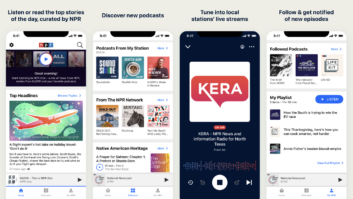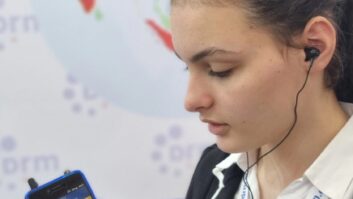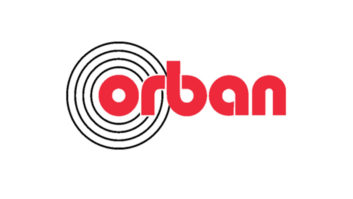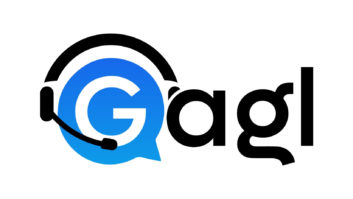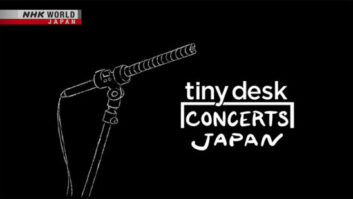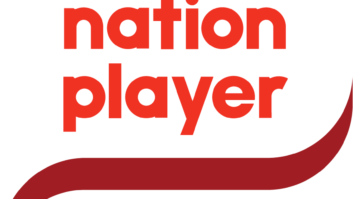“On average, Americans are now checking their smartphones 156 times per day,” a media expert proclaimed at a lecture I attended in June.
A quick search on my mobile device (what else?) brought up various studies from the last three years, showing people using smartphones between 100 and 300 times a day. While I couldn’t easily find a recognizable research report — unless you live by the UK’s “Daily Mail” — it’s clear just by observing people that there is something intense going on with the human connection to mobile devices.
What does this growing device dependence mean for the radio industry?
NUMÉRO UNO
The industry as a whole must put effort toward having the FM chip turned on that already exists on most phones.

Emmis CEO Jeff Smulyan knows you have a smartphone in your hand. Wait — you didn’t know that your iPhone and most other phones have an FM chip that needs only to be activated? You’re not alone. Anecdotally, I’ve yet to locate one person outside broadcasting who has any idea that this capability exists. The NAB is trying to get mobile manufacturers to turn the chip on. However, the phone companies, who make money when we all use data, prefer to encourage consumers to use streaming apps. The telecoms claim that demand for non-streamed live radio is small.
Jeff Smulyan, CEO of Emmis, did a terrific interview on NPR a few months ago concerning this issue, and I highly recommend you give it a listen or at least have a look at the transcript. I love the title npr.org used for the article: “The Hidden FM Radio Inside Your Pocket, And Why You Can’t Use It.”
One of the things Jeff mentions is that while HTC and Motorola chips haven’t been blocked, it appears that your phone company still has to turn on the chip. He also says Jot Carpenter, vice president of government affairs for CTIA — The Wireless Association, is not in favor of turning on the chip until smartphone consumers create a demand.
To me, this sounds like an opportunity for our medium. Radio excels in creating demand for products and services. Our industry must come together and create a massive promotional campaign!
CALL TO ACTION
Recorded and live messaging should be created to explain to listeners that free broadcast radio is available on their phones without paying for streaming data and without massive battery consumption. Further, as FEMA points out, in emergencies when cell signals disappear this integrated radio will still work without a data connection. This truly can save lives.
These messages should run during the same time period across the USA, for maximum reach and frequency for at least one month on commercial and public radio stations and networks. I’m sure one of the team members leading this initiative can come up with an easy call to action: Calling, texting, creating and promoting an online petition using a vehicle such as Change.org, or emailing the appropriate agency or person.
What else does mobile phone use mean to our industry? It means radio station websites must look great on a smartphone. There are still far too many that are desktop-only and look ridiculous on a phone. If you can’t afford responsive design right now, at least have a mobile site created until you can budget appropriately. Also keep in mind that a lack of a mobile-responsive website really hurts in the new Google search rankings.
Do you use SMS text messaging to accept song requests, topics for talk shows, or news and traffic reports from listeners? Don’t imagine for a second that Twitter is enough. That’s just an excuse to save money. The average Joe still uses text a lot and will text you for contests a lot faster than he will call you to hear a busy signal. “I’ll take caller 100!” Come on, you don’t have to do that anymore. When people text you, they can receive a great message back immediately instead of feeling like they are ignored by a phone that may or may not answer.
How much do you talk about mobile apps on the air? If the answer is never or rarely, you’re missing out on a compelling piece of water cooler chat. Don’t believe me? Ask your audience for app recommendations. Have your personalities try out apps and report on the positives and negatives. Feel compelled to make money with this idea? How about “An App a Day,” sponsored by someone who wants to promote their own cool app!
I now wonder how many times a day I check my own phone. Today I installed a free app called “Checky” that will tell me exactly how often I’m engaged with my iPhone while I have my face pointed toward it. At least I have a benchmark. And hey, if the number exceeds 150, I may seek professional help.
The author is president of Lapidus Media. Contact him at[email protected].






